Bricks and mortar degrade from exposure to external elements over time. Moisture degrades masonry even faster, and you must call Chimney Repair Charleston SC quickly to avoid a chimney collapse.
The number one indicator of chimney damage is crumbling mortar. This must be repaired with tuckpointing to prevent further moisture penetration and to strengthen the chimney stack.
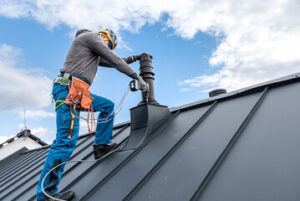
If you see shards of brick or broken pieces of mortar around your chimney, it’s a sign that the masonry is beginning to break down. This could be a natural part of aging or it could mean that water is leaking into the chimney and causing damage to other structures, such as your roof and the contents of your home.
Chimney brick spalling is a problem that often occurs in wet or freezing climates where moisture tends to cause masonry to crack and crumble. It can also occur when a chimney was built incorrectly or with cheap bricks and mortar. The bricks are prone to damage because they don’t absorb moisture as well as top-quality bricks. The mortar is also likely to crack and crumble more quickly than quality mortar.
Brick spalling is a serious issue that can lead to your chimney collapsing and causing extensive and costly damage to the house, roof and yard. If the spalling is severe, your chimney may need to be completely rebuilt.
A professional mason will repair damaged bricks by carefully removing the deteriorated material while preserving the surrounding bricks and mortar. A contrasting-colored mortar is then applied to fill in the spaces. This process is called tuckpointing and it can be performed to restore the appearance of your chimney as well as prevent further damage.
Chimney masonry is best repaired by a professional mason who has the skills and tools to do the job correctly. If you choose to do the repairs yourself, prepare your work area by hanging plastic drop cloths and taping them to any doors, windows or hallway openings where dust might fall. A hammer and cold chisel are used to remove the old mortar, and a drill and drill bit are helpful for cutting through hard bricks.
A mix of cement, sand and lime is used to make mortar. A masonry trowel is then used to spread the new mortar over the damaged bricks. It is important to use a matching color of mortar so the repaired bricks look like the rest of the chimney structure. Wet the brick slightly before applying the mortar and then tamp it down with your hands to smooth it. After the mortar dries, a wire brush is used to clean away excess mortar from the bricks and the surrounding area. A waterproof sealant is then applied to the masonry and chimney crown to prevent further water damage.
Efflorescence is a white powdery substance that can build up on brick and stone surfaces. It is the result of water soaking into the materials and leaving salts behind as it evaporates, and it can be a sign of a moisture problem within the structure. Although the stains are not dangerous, they can be unsightly and need to be cleaned. In addition, if left untreated, the moisture can cause significant damage to brick and other masonry materials.
Moisture can enter brick and other masonry structures in several ways, including cracks and fissures. Rain, snow melt, and even sprinklers can contain water that can seep into the material. Water can also penetrate brick-and-mortar walls through a chimney flue liner that is not properly installed or damaged. As water moves through the chimney, it dissolves salt particles that are naturally present in the building materials and then deposits those salts on the outside surface of the structure.
If you have efflorescence on your chimney, it is time to call a professional to inspect the structure. The chimney sweep will determine the extent of any water damage and can apply a waterproofing product to slow the spread of moisture. He or she will also repair any cracks that are visible and re-seal the flue liner to prevent moisture penetration in the future.
Chimneys can also experience structural problems due to moisture, such as a chimney cap that is not properly installed or a chimney flue liner that is too small for the size of the flue. These issues can lead to a chimney that is not safe to use, so it is important to find and address the problem as quickly as possible.
Efflorescence can be prevented by using building materials that do not contain large amounts of soluble salts during construction. It can also be prevented by ensuring that rainwater is directed away from the structure and by removing any sources of moisture infiltration from the site. Using building materials that do not easily absorb water and by establishing proper drainage systems can help to prevent efflorescence as well.
Chimneys are designed to allow smoke and combustion gases to escape from a home’s interior through the roof. Unfortunately, the chimney can become damaged by a variety of factors, including aging and environmental conditions. When this occurs, professional chimney repairs are often needed to restore the chimney to its original condition.
During chimney repair, it is important to remember that working on rooftops can be dangerous and requires special equipment. This can add to the overall cost of the project. Homeowners should leave chimney repairs to professionals so they can be assured that the chimney will be safe and secure when they use it again.
One of the most common issues that homeowners need chimney repair for is rust. When rust develops on the inside of a chimney, it can create a fire hazard and corrode the masonry. The damage to the masonry can also impact the draft of the chimney and make it more difficult to operate.
Another common issue is spalling brick. This is a problem that many homeowners experience, especially in colder climates. The spalling is caused by water that seeps into a brick and goes through the freeze-thaw cycle, which causes the brick to weaken and crumble. If a homeowner notices that their chimney is starting to spall, they should have it repaired right away because it can lead to a chimney collapse.
Chimney repair services often include the repointing of mortar joints. Repointing involves grinding down the existing mortar and filling it with a type of cement called “type N.” During this process, it is important to wear protective gear, such as a face mask, ear plugs, and safety glasses.
In addition to repairing the mortar, a chimney repair service will often inspect the flashing and crown of the chimney. A gap in the flashing allows moisture to enter the chimney and degrade the masonry. In some cases, this moisture can lead to mold problems and other symptoms that require chimney repair.
The most important thing a homeowner can do to keep their chimney in good condition is to have it inspected regularly. An annual inspection can help prevent serious issues, such as a chimney collapse or a chimney fire, from occurring.
Water infiltration is a major problem for any chimney. When it seeps into walls and ceilings, stains appear that are unsightly and can damage wallpaper and paint. The moisture also promotes the growth of mold and mildew, which can be harmful to your family’s health. This is especially true if the water penetrates your chimney and travels to furniture, woodwork, carpeting, and other household items, where it can cause rot.
The freeze-thaw cycle causes deterioration of the mortar on your masonry chimney. As the freeze-thaw process happens, the water gets into tiny cracks in brick and concrete and then freezes and expands. This can break apart the mortar and the masonry itself. Bricks will then crumble, and you’ll need expensive chimney repair work.
You might not notice the damage to your masonry chimney until you notice a stain on a wall or ceiling near the fireplace. This is called spalling, and it’s a sign of serious chimney problems. It’s important to get spalling repaired as soon as possible to prevent the water from getting into other parts of your home and causing even more damage.
Chimney leaks can be just as dangerous as chimney fires. If the flue liner is cracked or broken, it will not be able to draft properly and vent dangerous byproducts of combustion like carbon monoxide out of your house. This can pose health risks and create unpleasant odors in your home as well.
If you don’t have a chimney cap or crown, rain can easily enter the chimney. Over time, this will lead to the formation of a white residue called efflorescence. This is caused by salt that migrates from the soil to the surface of your brick chimney and then evaporates when it rains.
The flashing is the material that surrounds the part of your chimney where it meets with the roof. It’s important that this is waterproofed to prevent rain from entering your chimney and damaging the structure. Chimney professionals can inspect the flashing for cracks or breaks and repair them as needed. They can also use a chimney inspection camera to check for water penetration and other chimney issues. A yearly chimney inspection can catch minor water problems before they turn into serious and costly ones.
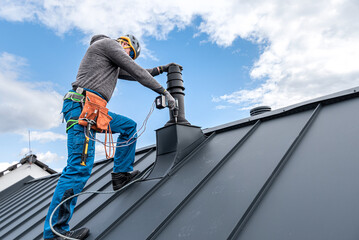
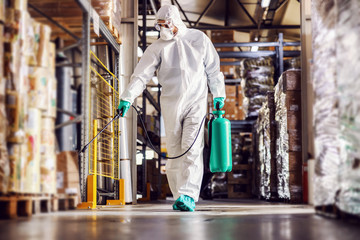
 Keep It Organized
Keep It Organized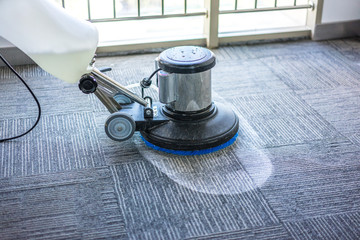
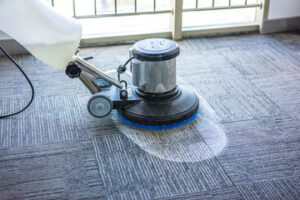 Carpets play many roles in a home and office, from providing sound insulation to enhancing the aesthetics of rooms. They also offer a sense of coziness and warmth.
Carpets play many roles in a home and office, from providing sound insulation to enhancing the aesthetics of rooms. They also offer a sense of coziness and warmth.